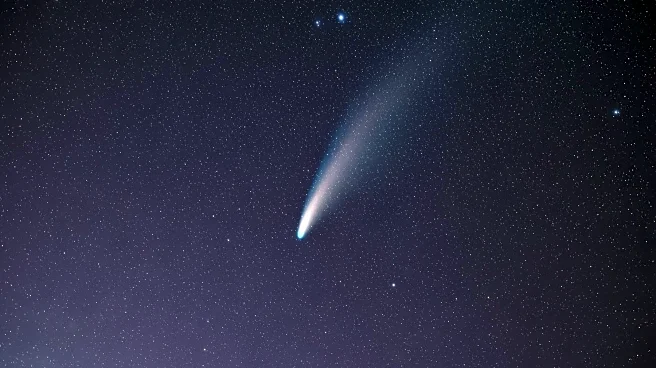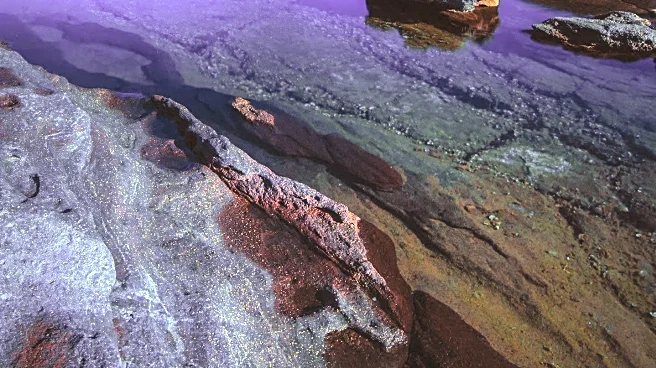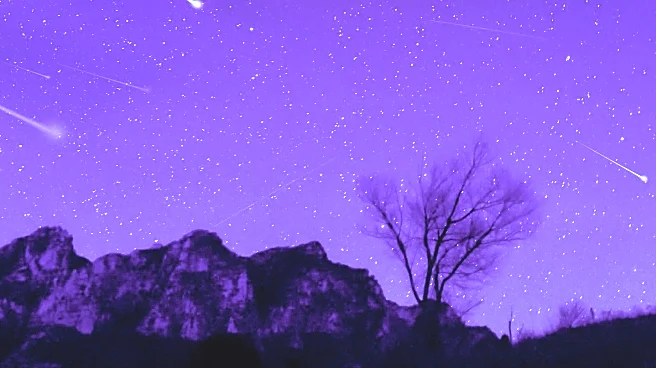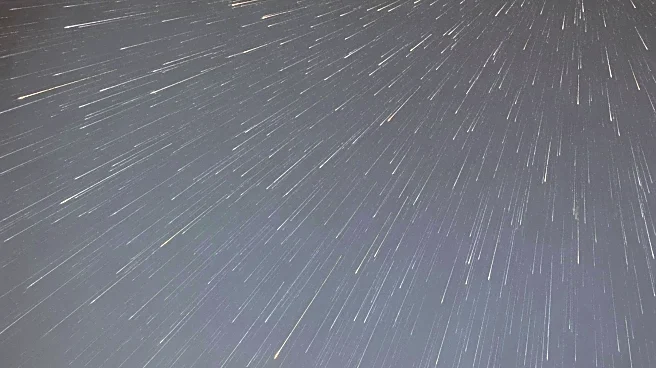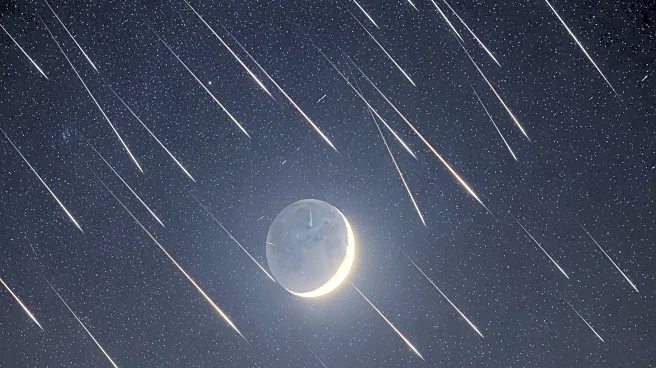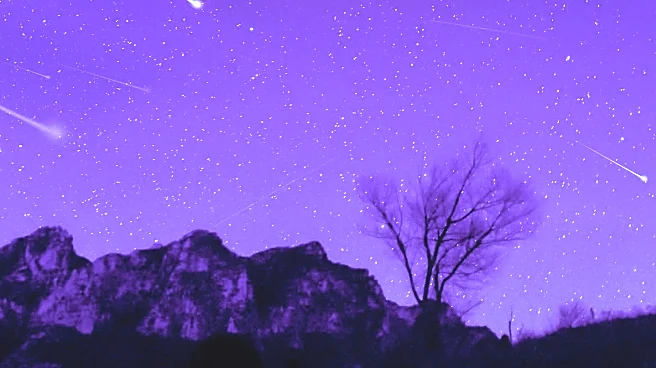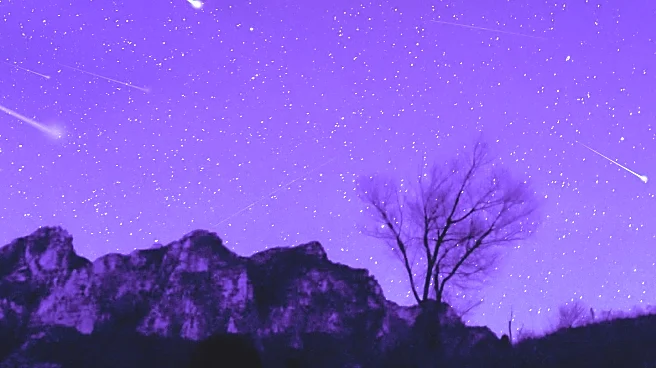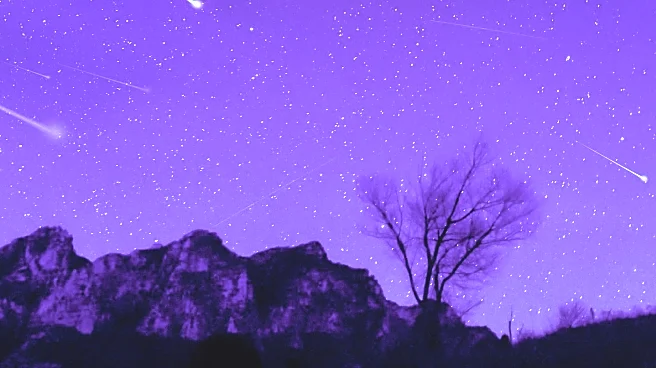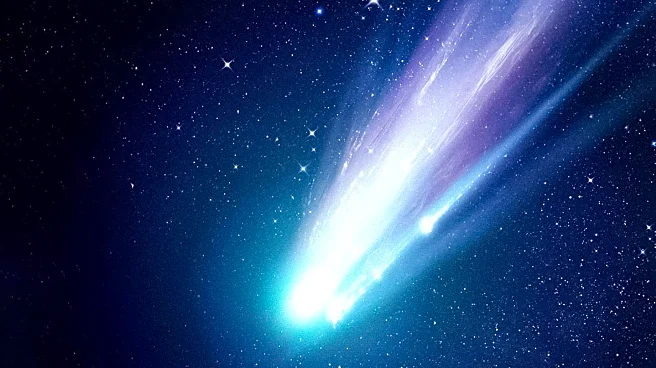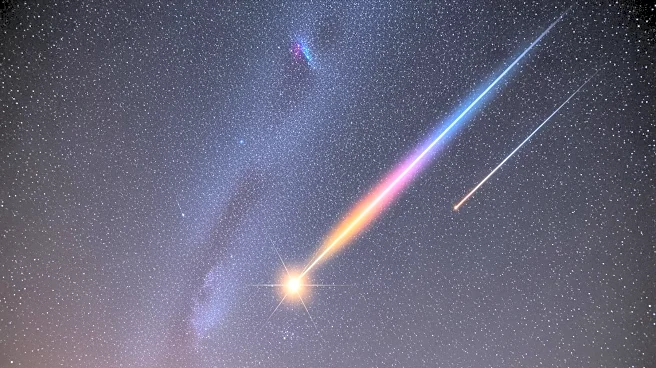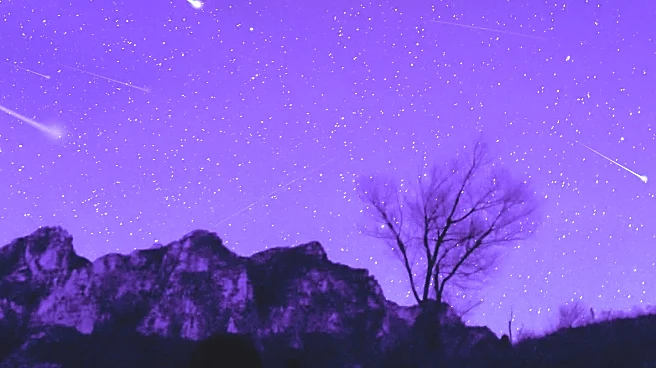What's Happening?
The Orionid meteor shower is set to peak on Tuesday night, providing a celestial display of meteors originating from Halley's comet debris. The best viewing time is after midnight, particularly in the hours leading up to dawn. The shower is expected to produce
approximately 10 to 20 meteors per hour. The meteors will radiate from a point near the upraised club of the constellation Orion the Hunter. Observers are advised to find a location with minimal light pollution and a clear view of the sky, using a lounge chair or blanket for comfort. The absence of the moon will ensure a dark sky, enhancing visibility. Additionally, Comet C/2025 A6 Lemmon may be visible, adding to the night sky's allure.
Why It's Important?
The Orionid meteor shower offers a unique opportunity for astronomy enthusiasts and the general public to witness a natural spectacle. This event highlights the ongoing interest in celestial phenomena and encourages public engagement with astronomy. The absence of the moon during the peak enhances visibility, making it an ideal time for stargazing. Such events can foster a greater appreciation for science and the natural world, potentially inspiring future generations to explore careers in astronomy and space exploration. The meteor shower also serves as a reminder of the vastness and beauty of the universe, providing a moment of reflection and wonder.
What's Next?
As the Orionid meteor shower peaks, observers can expect improved visibility as the night progresses, particularly towards dawn. The event may prompt increased interest in upcoming celestial events and encourage individuals to explore astronomy further. Local weather conditions will play a significant role in viewing success, and enthusiasts are advised to check forecasts to ensure optimal viewing conditions. The presence of Comet C/2025 A6 Lemmon offers an additional point of interest, potentially leading to further observations and discussions within the astronomy community.
Beyond the Headlines
The Orionid meteor shower, while a visual spectacle, also underscores the importance of preserving dark skies and minimizing light pollution. As urban areas expand, finding locations with minimal light interference becomes increasingly challenging, highlighting the need for conservation efforts. Additionally, the event may spark discussions on the significance of comets and meteors in understanding the solar system's history and evolution. Such celestial events can also serve as a catalyst for educational programs and community events centered around astronomy and science.


